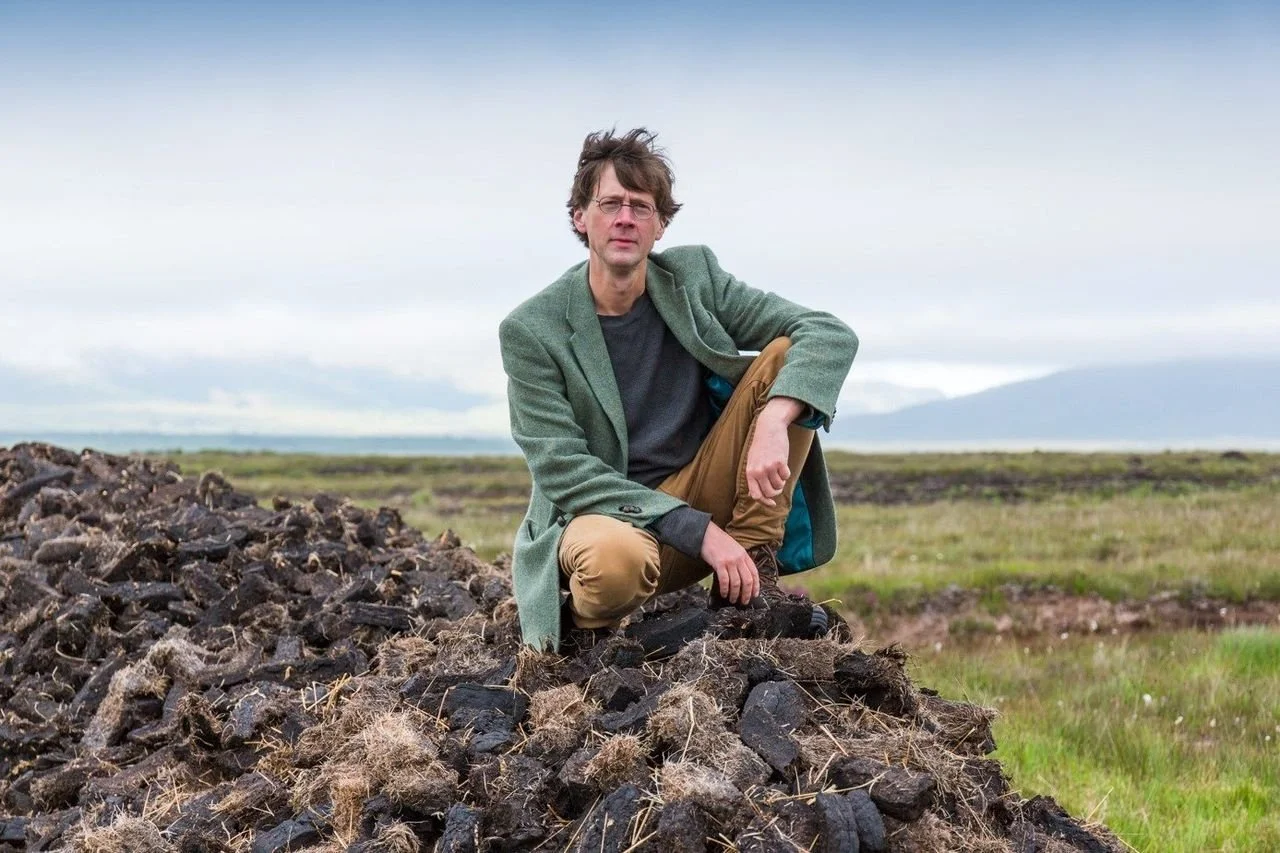I was devastated to learn last night that Irish writer and broadcaster Manchán Magan died on Oct. 2. It seems impossible; he was only 55, and had so many plans ahead of him.
I first encountered Magan’s work around 2020, when I began learning the Irish language on Duolingo (not the best platform for it, but that’s a conversation for another time). He was a vigorous spokesman for the Irish language, and for bringing it back in a way that went far beyond the rote learning students get in Irish schools, making it enchanting again.
A little background: Irish developed from the language the Celts brought to the island when they settled it sometime between 2400 and 2000 BC. It has been in use ever since, and was the primary language of Ireland until the English began colonizing the country. Speaking Irish in public became illegal, and all schooling, government communication and legal affairs were conducted strictly in English.
British rule was less absolute in portions of Ireland, particularly the far-Western areas, and the Irish language survived here, in places collectively known as the Gaeltacht. Those regions have continued to shrink over the decades.
In 2003, the Irish government signed the Official Languages Act (Acht na dTeangacha Oifigiúla), reclaiming Irish as an official language of the island.
Four years later, Magan traveled around Ireland, testing how far he could get speaking Irish, and recorded the results for a four-part series called “No Béarla” (“No English”).
I watched the series shortly after I began my studies, and was both amused and horrified by moments like the one in which Magan tries to buy condoms in a drugstore, or when he sings bawdy songs in the streets of Galway to see if anyone understands just how filthy he’s being (mostly, no).
I began following Magan’s work online at that point, and discovered he was working on a wealth of projects that tie Irish language, culture, folklore and landscape together in ways that resonate with me deeply.
Off and on for years he hosted the Almanac of Ireland, a Radio Telefis Éireann podcast that considered bogs, sacred wells and Irish foods as well as numerous artists, mythologers and elder storytellers.
He gathered forgotten words from Ireland’s fishing communities and shared them in a project he called “Sea Tamagotchi.” (For example, the word for the “sucking of the ocean at the shore during large tides of spring and autumn [that is] particularly noticeable at night” is suaitiú.)
In the fall of 2020, he released “Thirty-Two Words for Field,” which focuses on how Ireland’s language and landscapes are tightly interwoven. I devoured this book when it finally arrived in the U.S., and it remains one of my favorite books of all time.
He’s released a few wonderful picture books, including “Tree Dogs, Banshee Fingers and Other Irish Words for Nature” in 2021 and “Wolf-Men and Water Hounds: The Myths, Monsters and Magic of Ireland” in 2023. (Did you know that the Irish call jellyfish smugairle rón — literally, seal snot?)
In 2022 came “Listen to the Land Speak,” in which Magan takes the reader on a journey across Ireland, investigating ancient place-names and the myths they reference. In particular, he talks about the rivers of Ireland as goddesses, places where visitors can communicate with the divine (or be disappeared into another world, if they aren’t careful).
Unlike many other men of his (or really any) generation, Magan celebrated the feminine in language, landscape and mythology.
“We fell head over heels for this man who taught us the vaginal nature of the sacred passages all over Ireland, and how much worship we must bring with us into the womb of the Earth. I will never forget the relish with which he spoke of women’s divinity, and the sparkle in his eye when he spoke of love,” writer and activist adrienne maree brown wrote on Instagram this morning.
I recently acquired Magan’s book “Focail na mBan” (“Women’s Words”), a collection of Irish words for vaginas, vulvas, clitorises and periods that he collected over the years, to give Irish women back the language around these parts of our bodies. I haven’t yet read it, but will likely savor it this weekend while thanking this writer for all he offered.
Magan was diagnosed with prostate cancer a couple of years ago, and he revealed in September that it had metastasized to just about every part of his body. He thought he might have a year or two more, or at least a few more months. It turned out he only had weeks.
Cancer is a real bastard. Especially this year, somehow.
Katie Greenwood Ross — who created music and art under the name Thistle Thistle — died in May of breast cancer. She was only 34, and such an amazing bright light in the world. Before her death, she wrote, “I feel very fulfilled. I feel like I did great stuff with my life. I feel like I was a very prolific guy. And I feel proud of myself and what I have done.”
And then went the incredible poet and empathy-generator Andrea Gibson, who died of ovarian cancer in July. Their writing taught readers how to open their hearts, to soften, to find wonder and awe in the everyday. Just before they died, they said, “I fucking LOVED my life.”
And now Manchán Magan. I am so grateful to have lived at the same time as him, Andrea and Katie.
In a recent interview, Magan said he wasn’t afraid of death. After death, he predicted, "[I will] remember all that other life I've been, all that being I've been for thousands of years beyond the physical body, the times that I wasn't in the physical body. And I'd say pretty soon again, I'll probably come into another body to continue this work.”
